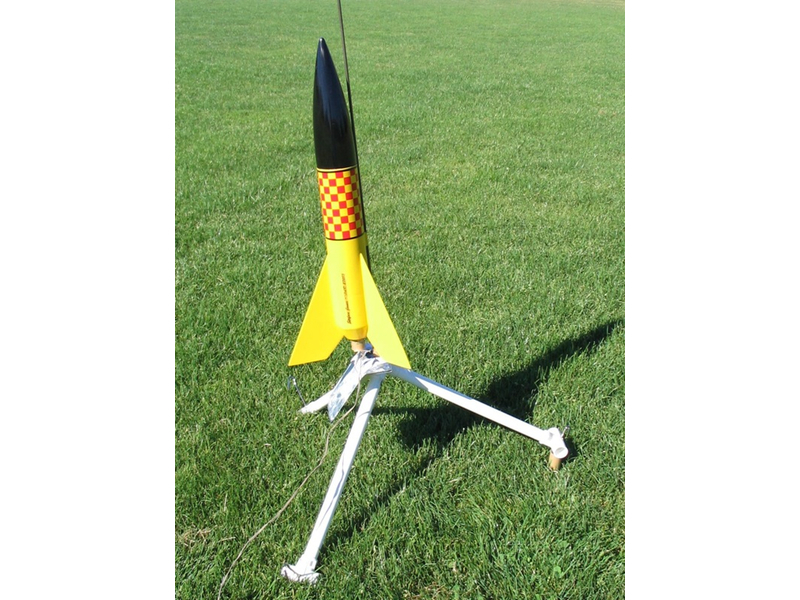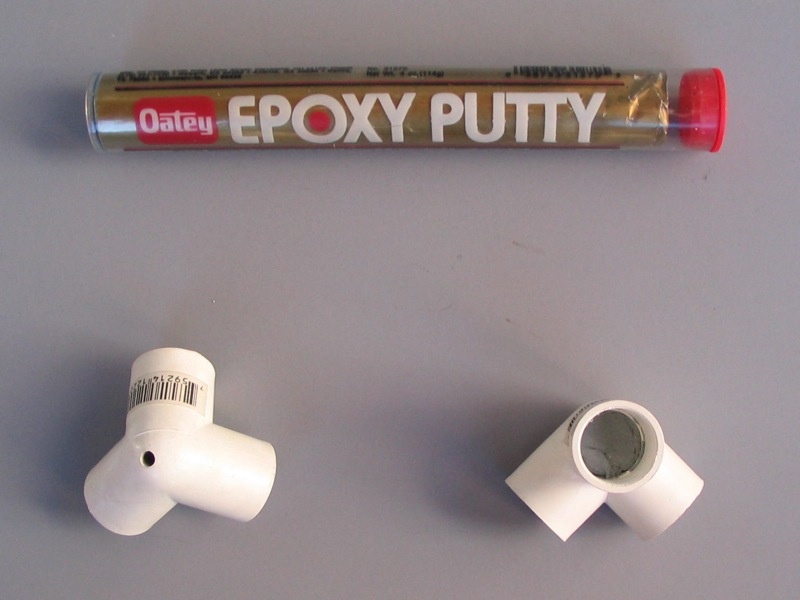My new dog is terrified of fireworks. This wouldn’t be a problem outside of July 4th — if I didn’t fly model rockets. But she can’t tell the difference between an Estes B6-4 and a Joyous Family Whistling Fountain, so rockets terrify her too. This makes weekend trips to the organized launches in central Oregon impractical, so I’ve been flying locally. Launching in suburbia can involve hikes to unused fields, so I designed this sturdy, portable launch stand made of PVC pipes and fittings.
Projects from Make: Magazine
Portable Model Rocket Launch Pad
Build a sturdy, portable launch stand made of PVC pipes and fittings.

Preparation.

Legs: Cut the PVC tube into 1′ lengths. Sand the ends smooth.
Feet: Drill a 1⁄4″ hole through the side of each T-junction.
Hubs: The corner junctions form the hub of the launcher’s tripod and support the launch rod. Stuff the center of each corner junction with epoxy putty, taking care not to get any in the socket areas. The hardened putty provides additional weight and support for the launch rod.
After the epoxy has cured, drill a hole straight down into the center of the junction’s rounded “elbow” and into the putty, taking care not to punch through the other side. Drill different-sized holes in each hub for different launch rods, one 1/8″ and the other 3/16″.
Blast Deflector: Fold over the ends of the metal shingle and crimp flat. Drill a 1⁄4″ hole about 2″ from one end.
Assembly.

You can string the pad’s legs and fittings into a tube that is easy to carry, stows in a car trunk, and doubles as storage for your launch rods. Toss the blast deflector, tent stakes, and spare hub can in a tote bag, along with your launch panel, motors, and other gear.
When you’ve reached the launch area, take the tube apart and assemble your tripod.
Choose a center hub and insert the legs into it.
Put a T-junction on each leg, turned so a side is flush against the ground.
Thread a tent stake through the holes in the feet and press into the ground.
Insert one end of the launch rod through the hole in the blast deflector and into the hub.
To angle the pad, pull up a stake and place an object under one of the feet.
Wherever and whatever you fly, be considerate and follow the NAR safety code (nar.org/ NARmrsc.html) that keeps the hobby legal!
Conclusion
This project first appeared in MAKE Volume 05, pages 141-142.









